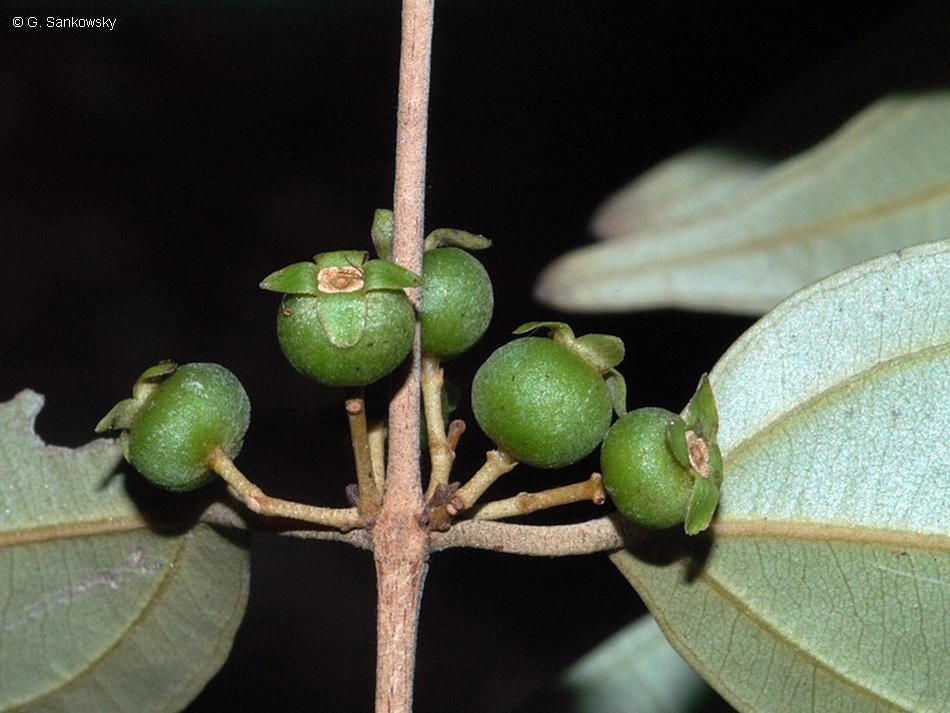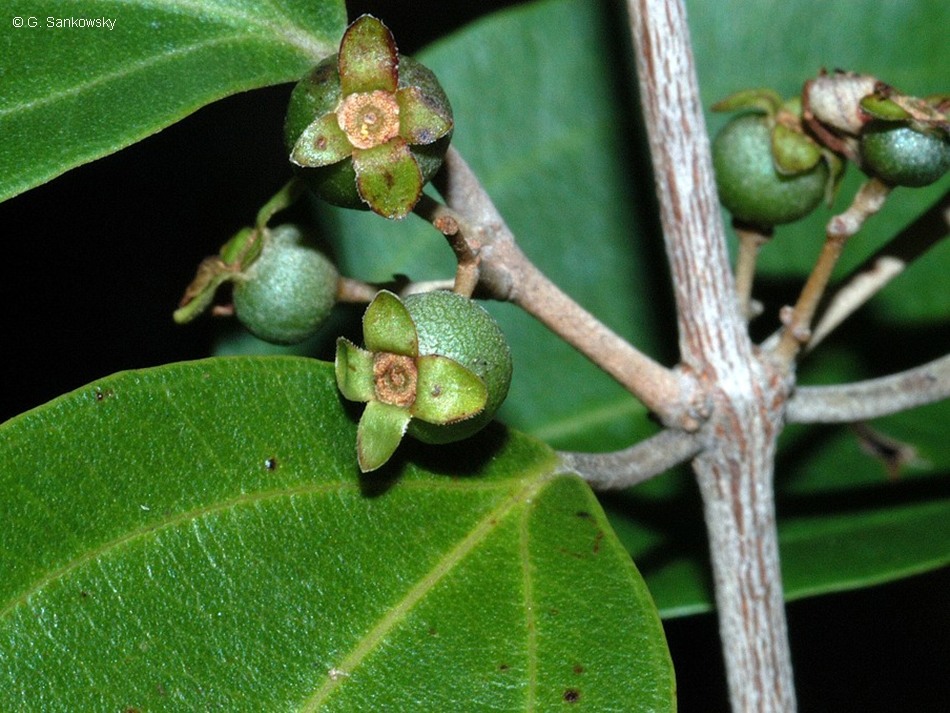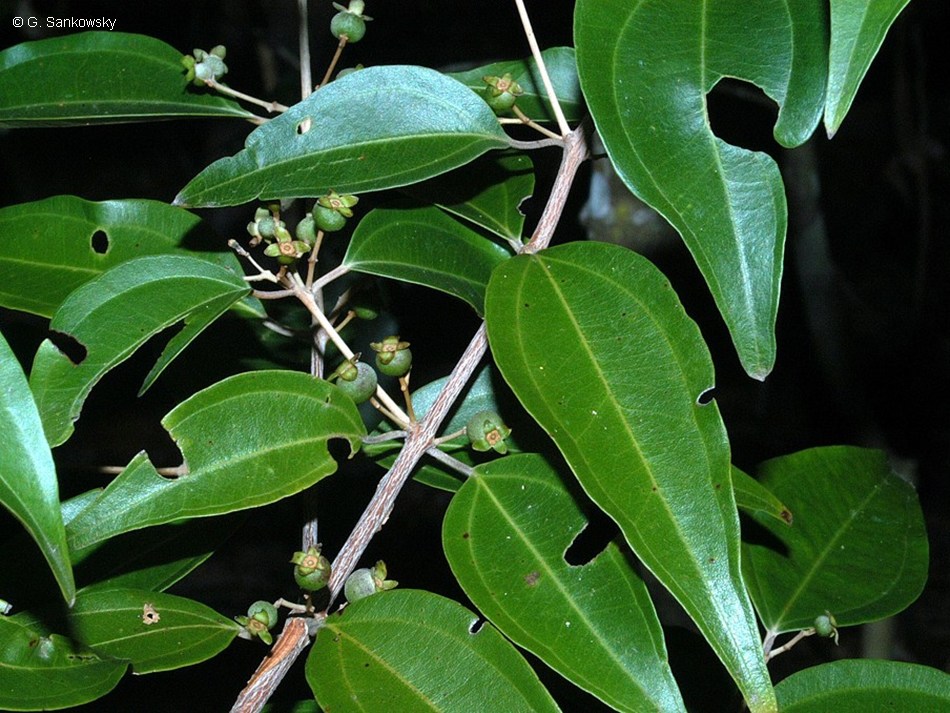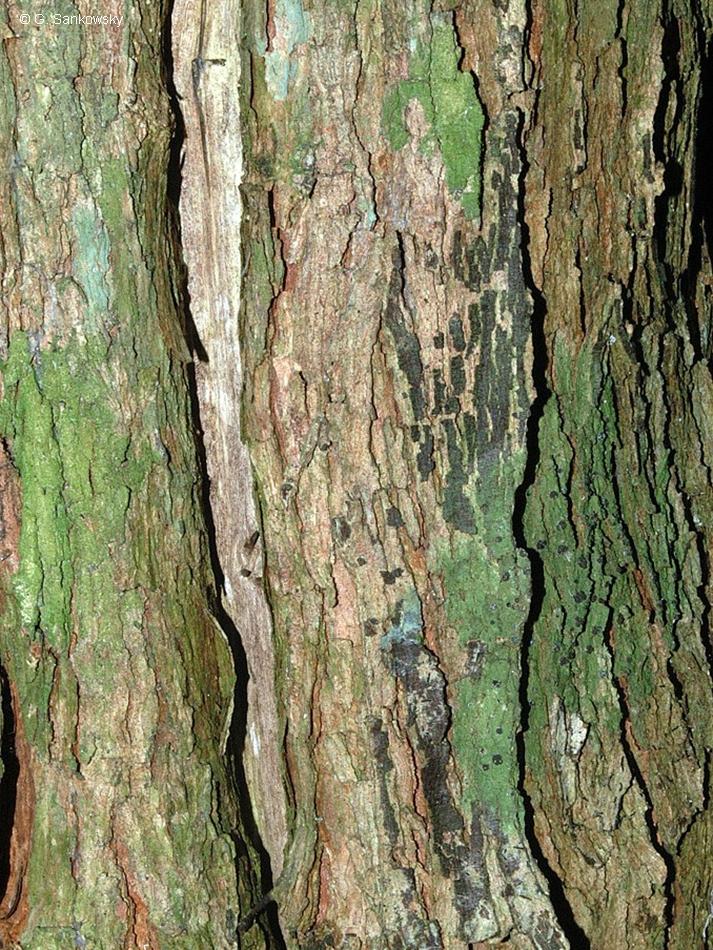Australian Tropical Rainforest Plants - Online edition
Rhodamnia acuminata C.T.White






White, C.T. (1937), The Australian species of Rhodamnia (Myrtaceae). Blumea Supplementary Series 1: 217. Type: "Queensland: Lake Cootharaba, Keys and Wedd, (type; flowering specimens);"
White Myrtle, Silver Malletwood, Cooloola Ironwood
Erect shrubs or trees to 13 m high; bark rough or flaky, light grey, grey or somewhat greenish. Young stems sparsely hairy, becoming hairless.
Leaves simple, opposite. New growth reddish. Stipules several in axils of leaves, linear, 0.2-0.3 mm long, reddish. Petiole 5-14 mm long, hairy but becoming glabrous, deeply channelled above. Leaf blade lanceolate, narrowly ovate or ovate, 5-14 cm long, 1.8-7 cm wide; base cuneate to rounded, margins entire, acuminate to a long blunt point. Leaf 3-veined with two prominent lateral veins arising from the base of the lamina and extending to apex, lateral veins numerous, distinct, intramarginal veins present but indistinct and very close to leaf margin. Domatia absent. Both surfaces apparently hairless, upper surface dark green and glossy, lower surface pale and shiny and appearing silvery or white. Oil glands present, visible with hand lens.
Inflorescences axillary, terminal or sometimes ramiflorous, flowers solitary, paired or in clusters of 3 or more. Flowers bisexual, actinomorphic, 4-merous. Hypanthium 1-2 mm long, glabrous. Sepals free to hypanthium, 2-3 mm long, broadly triangular, green, glabrous, fimbriate on margins. Petals free, 5-6 mm long, reflexed, obovate, with hairs on outer surface, white. Stamens numerous (c. 60-85). Ovary inferior, apex glabrous, 1-locular; style 6-7 mm long, glabrous.
Fruit fleshy, a berry, subglobose to globose, 4-6.5 mm long, 6-7.5 mm in diam., dark purple to nearly black at maturity, sepals persistent in fruit. Seeds 10-20, 3-4.5 mm long, more or less hemispherical with irregular and often angular sides, with a hard outer layer, yellow or light brown.
Features not available.
Occurs in CEQ, southwards to south eastern Queensland. Found in subtropical and littoral rainforest communities.
This profile information and associated coding has been adapted from Harden et al. (2014), Snow (2007) and Wilson (2011).





